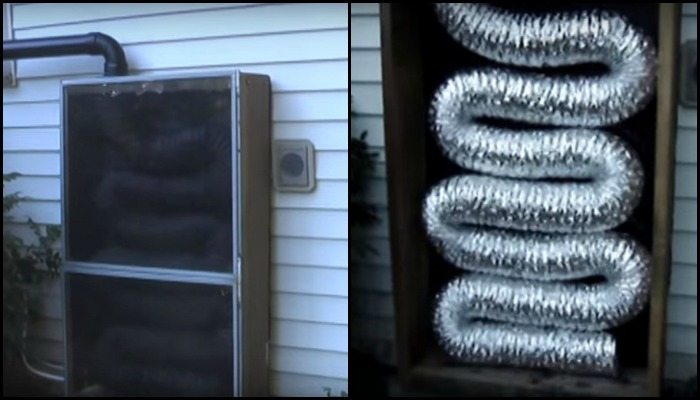Looking for effective yet inexpensive ways to make your home warmer for the winter? We know that it can be a difficult search, but here’s a DIY project that might just be the one you are looking for!
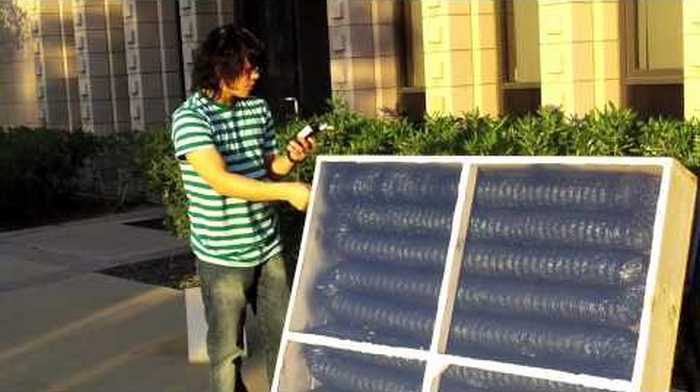
The materials are simple and all totaling less than $50. What’s even better is that the unit uses solar energy, making it a really cheap heating system for your home!
This DIY solar water heater is also very simple to build that you can finish the project over the weekend.
Watch the quick tutorial below and see how easy it is to make your own solar furnace.
And while you’re on your quest to keeping your home warm and cosy, why not also make these DIY insulated curtains? This will help make your solar furnace even more effective!
Do you think this DIY project will work in your area? :)
Contents
Building a Solar Furnace
Materials
- 3′ x 5′ Black Plastic
- 2 Glass Window Panes with Aluminum Frame
- 1/2″ Lag Bolts
- 2″ x 6″ Timber Frame
- ABS Plastic Pipe
- Dryer Vent Hose
- Black Spray Paint
Tools
- Measuring Tape
- Drill
- Table Saw
- Staple Gun
Steps
Step 1: Build the Frame
Measure and cut your 2′- x 6′- timber pieces to create a rectangular frame. The frame’s measurements should coincide with those of your glass window panes. Cut the timber to size with the table saw; then, drill holes and fasten the pieces together with 1/2″ lag bolts to build the frame.
Step 2: Paint the Timber Frame
Once the frame is put together, mist black spray paint over it. This will enable the frame to pick up and preserve more heat. Before moving on, let the paint dry.
Step 3: Attach the Black Plastic
Cut the 3′- x 5′- black plastic to suit the timber frame’s inside. Tightly fastened the plastic to the rear of the frame with the staple gun Heat from the sunlight will be helped by this black surface.
Step 4: Insert the Glass Window Panes
Over the timber frame, raise the two glass windows. These will build the barrier trapping heat inside the furnace. Lag bolts will enable you to fasten them tightly against the frame.
Step 5: Install the ABS Plastic Pipe
Cut ABS plastic pipe to form an air duct allowing furnace airflow. Ensuring the holes are big enough to fit the pipe, drill two holes on opposite sides of the timber frame. Put the pipe into the holes such that air may pass in and out of the furnace.
Step 6: Connect the Dryer Vent Hose
Attach the dryer vent hose to the end of the ABS pipe guiding indoors or into the space you wish to heat. This hose will direct furnace warm air straight into your house.
Step 7: Test the Solar Furnace
For best sun exposure, place the solar furnace in a sunny spot—probably facing south. Let sunshine through the glass window panes to heat the black plastic inside. The ABS pipe will then run the warm air through it into the vent hose.
For a visual guide to making a solar furnace, check out this video.
Click on any image to start lightbox display. Use your Esc key to close the lightbox.

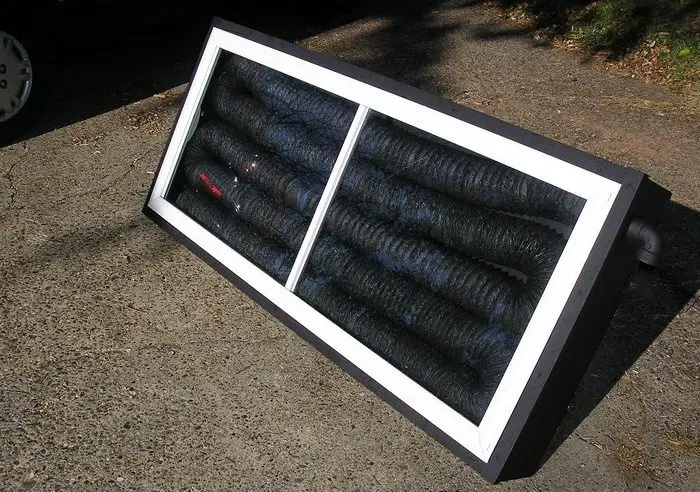

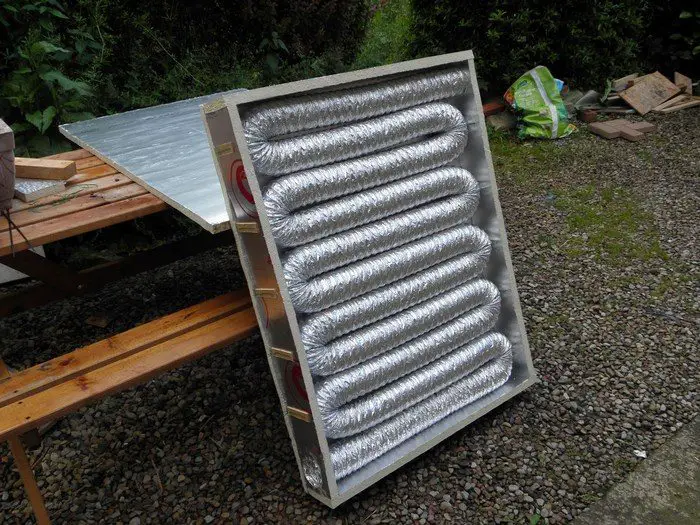
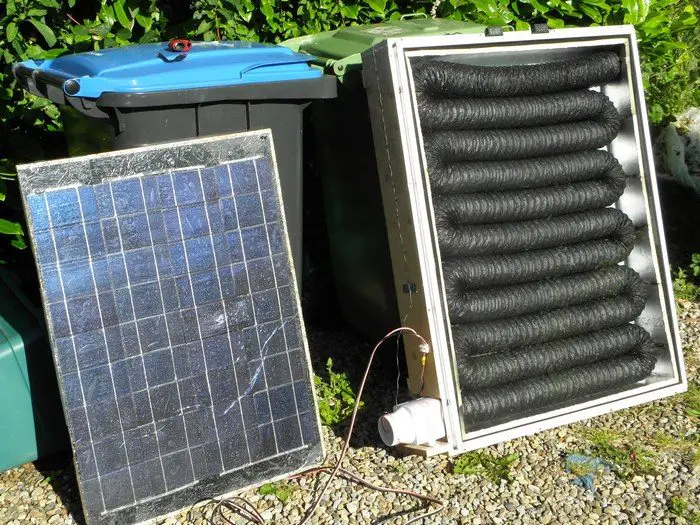
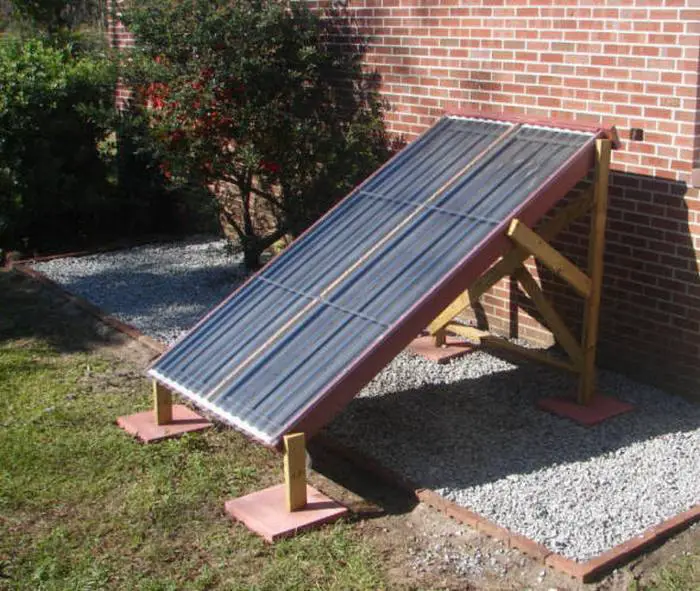
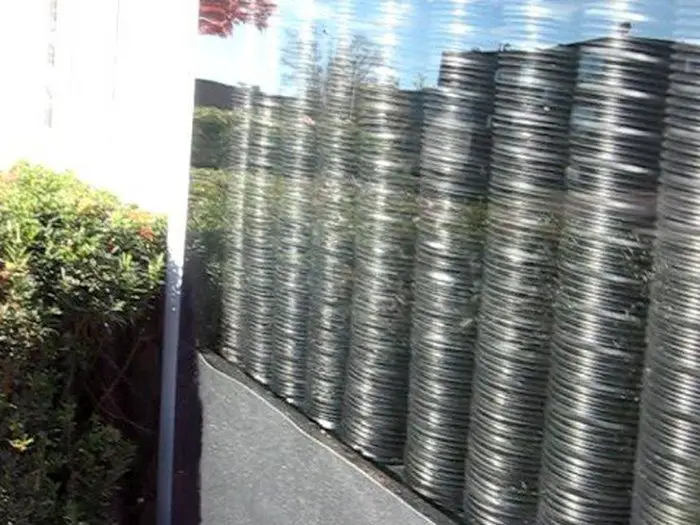
Thanks to Warmpod for this great project!
Choosing the Best Location for Your Solar Furnace
Maximizing the performance of a solar furnace depends on its proper site selection. Your solar furnace’s efficiency mostly relies on its direct sunlight exposure so that it may absorb and store enough heat to warm your house.
This guide will enable you to select the ideal site for your solar furnace so as to maximize its performance.
Maximize Sunlight Exposure
Selecting a site for your solar furnace mostly depends on the exposure to sunlight. Particularly during peak sunlight hours—usually between 10 a.m. and 4 p.m.—the furnace should be placed in a location that gets the most direct sunlight all day. The solar furnace should ideally be placed on the south-facing side of your house since this will guarantee the most constant and direct sunlight. Should your house lack a suitable south-facing location, you can still locate the furnace in an area with least shadow from buildings, trees, or other objects.
Furthermore, the sun’s position changes with the season. For instance, the sun is lower in the sky during winter, so changing the angle of your solar furnace will help capture the lower sun rays and hence improve efficiency.
Consider the Space Around the Solar Furnace
Where you locate your solar furnace should let enough air flow and ventilation. Steer clear of positioning the furnace directly next to fences or walls that might restrict airflow. Make sure the vent of the solar furnace, which is meant to vent warm air straight into your house, is connected to a conveniently accessible area, say a side wall or a basement window. Better temperature control inside your house and smoother airflow will follow from this.
If your solar furnace is mobile as well, you can test several sites depending on the time of year or changing sunlight conditions. Just make sure its location doesn’t restrict the furnace’s solar absorption or airflow.
Use Reflective Surfaces to Boost Performance
Reflective surfaces help you maximize the performance of your solar furnace even if the intended location gets less sunlight than you would like. Reflective panels, mirrors, or aluminum foil placed around the solar furnace can help direct more sunlight toward it, enabling its absorption of extra heat. In colder climates or those with less direct sunlight, this can clearly affect things.
When you arrange reflecting surfaces, make sure they don’t block natural airflow or cause overheating problems. The intention is to increase rather than impede the furnace’s solar exposure.
Avoid Shaded Areas
Though it seems clear-cut, you should never put your solar furnace in any shaded area. Even partial shading throughout the day can greatly diminish the furnace’s capacity to produce heat. Watch surrounding trees, tall buildings, or seasonal variations that might obscure the sun at specific times. Prune any overhanging limbs that might cast shadow as needed.
Remember also that shadows change as the day goes on. Make sure your selected site stays sunny for most of the day, particularly in winter when shorter daylight hours are experienced.
Test and Monitor the Location
Testing and keeping an eye on your solar furnace once you have decided on the ideal location is a smart idea. Track the furnace’s daily heat output and how long it remains in direct sunlight. This will enable you to decide whether minor furnace movement or adding reflective surfaces is required.
Carefully choosing the site for your solar furnace will help you to guarantee that it operates as it should, so supplying effective, sustainable heat for your house. Correct orientation will enable your furnace to maximize sunlight, so providing an environmentally friendly and reasonably priced means of heating.
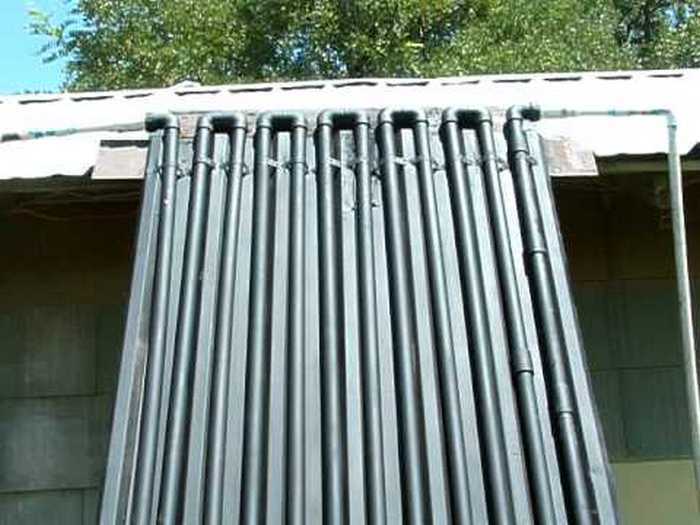
Benefits of Using a Solar Furnace
One excellent approach to effectively and reasonably heating your house from renewable energy is with a solar furnace. A solar furnace can offer several advantages beyond cost savings by running on the sun’s energy. Let us investigate some main benefits of including a solar furnace in your house heating system.
Cost Savings
Using a solar furnace offers one of the main advantages in terms of possible financial savings. A solar furnace uses free solar energy from the sun, unlike conventional heating systems that depend on gas, electricity, or oil. This implies that there are either minimal or no continuous fuel costs once the initial setup cost is paid for. These savings can mount up over time, drastically lowering your total heating costs and rendering the system quite reasonably cost-effective.
Eco-Friendly and Renewable Energy Source
One sustainable choice for heating your house is solar furnaces. Using the energy of the sun helps you lower your carbon footprint and lessen your dependence on petrol. Solar energy is an environmentally conscious choice since it is a renewable resource devoid of greenhouse gases or contribution to air pollution. Using a solar furnace supports more general sustainability initiatives by helping to save other energy resources.
Low Maintenance
Once set up, a solar furnace calls for less maintenance than more conventional heating systems. The furnace’s durable materials mean less repairs are required; there are no moving components that require routine servicing. Every now and then cleaning the glass panes and making sure the furnace is in good sunlight will help it to run effectively. Over time, this low maintenance style can save money, time, and effort.
Energy Independence
Using a solar furnace lets you better control your energy use. It lessens your reliance on outside energy sources, so shielding you from changing energy costs. A solar furnace provides consistent and self-sustaining heating if your area experiences high or erratic energy costs. When there is a power outage or in remote areas where conventional heating sources could be few, this more energy independence can be quite beneficial.
Scalability and Flexibility
Solar furnaces are flexible and customizable to your needs. They offer scalability whether you want to augment the heating system in your house or heat one room. Perfect for a range of living circumstances, you can start modestly with one unit and grow as needed. They also fit nicely with other heating systems, allowing you to progressively switch to renewable energy without totally redesigning your current arrangement.
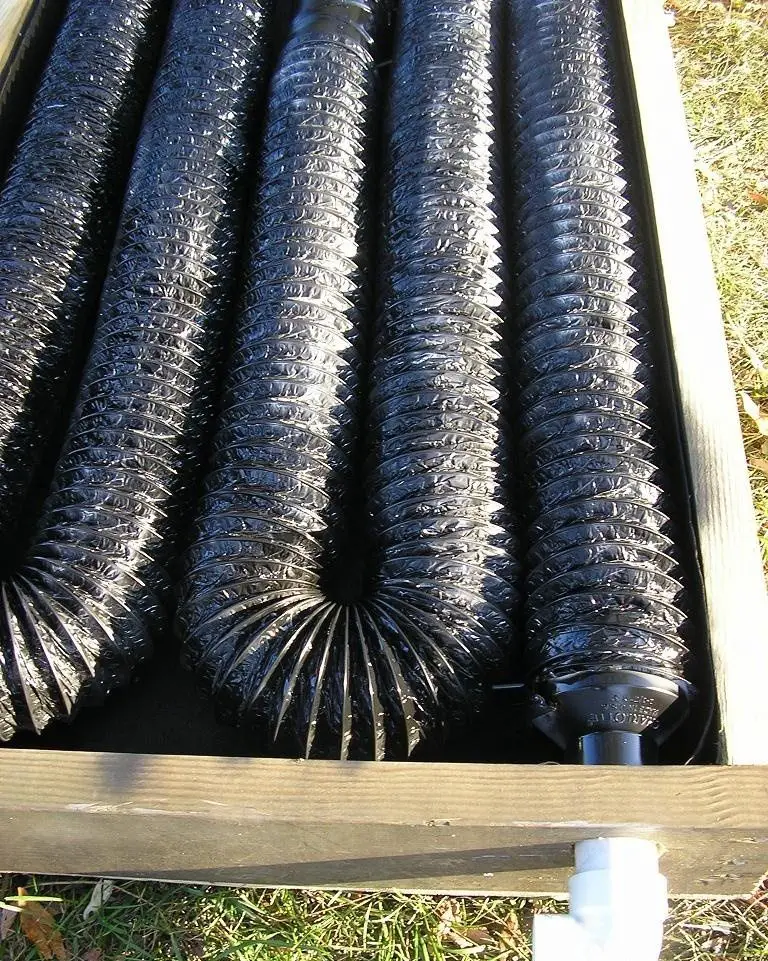
Reduced Environmental Impact
Using a solar furnace can greatly lessen your house’s environmental impact. The furnace lessens the negative consequences of conventional energy generation and helps to improve air quality since it does not burn fuels or emit harmful pollutants. This advantage appeals to those wishing to live a more environmentally conscious lifestyle while still enjoying modern conveniences.
A solar furnace offers many advantages, from cost savings and energy independence to a lessened environmental impact. This eco-friendly, sustainable, and reasonably priced heating system will improve the comfort of your house and help create a better future for us all.
Conclusion
Building a solar furnace is a cost-effective and environmentally friendly way to heat your home using renewable energy. With simple materials and tools, you can complete this project over a weekend and start saving on heating bills. A solar furnace provides a sustainable solution that reduces your reliance on traditional energy sources.
To make sure your solar furnace is properly heating your home, check out our guide on sealing air leaks!

